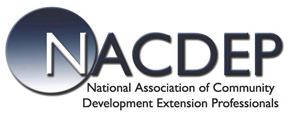By: Meghan Thoreau, OSU Extension Educator, Community Development & STEM, Pickaway County

Airspace 101 – Rules of the Sky. Graphic by the Federal Aviation Administration.
This week in our Core Curriculum-based Youth Drone Program Series, we’re diving into Airspace 101—a crucial topic for every young drone pilot. Airspace is the sky we all share, and in the U.S., the FAA makes sure aircraft—from jumbo jets to tiny drones—move safely within it. Click here to access the Ohioline Fact Sheet: Understanding Airspace for Drone Pilots.
Why Airspace Matters for Drone Pilots
Flying a drone isn’t just about takeoff and landing. It’s about knowing where you’re allowed to fly, when you need FAA permission, and how to avoid airspace that could put you—or others—at risk. Accidentally flying into controlled airspace near an airport without authorization can lead to dangerous situations and serious penalties.
Controlled vs. Uncontrolled Airspace
Think of controlled airspace like a busy highway and uncontrolled airspace like a quiet back road.
- Controlled Airspace (Classes B, C, D, and parts of E):
Found around airports and cities. Drone pilots must get FAA authorization—often through the LAANC app—to fly here. - Uncontrolled Airspace (Class G):
Open, low-traffic skies are typically found in rural areas. Great for drone flying and rarely requires special permission—follow the Part 107 rules and stay under 400 feet.
Tools That Keep Pilots Safe
Youth pilots learn to use apps like B4UFLY to check airspace in real time, just like professional pilots. Mapping safe routes, scanning for temporary flight restrictions (TFRs), and checking nearby airports all become part of smart pre-flight habits.
Looking Ahead: Sectional Charts
This fact sheet also introduces sectional charts—special aviation maps that display airspace boundaries, airports, elevations, and other relevant information. They’re the next step in becoming a confident and responsible drone operator. The upcoming Part 3 in this series will take us deeper into how to read and use these charts.

Sectional chart excerpt of Watertown Regional Airport (ATY), Class E Airspace, (ATY). Map by vfrmap.com (vfrmap.com, n.d.).
Bottom line: Understanding airspace is key to safe flight. Whether we’re filming aerial videos, racing drones, or practicing maneuvers at the Westfall Drone Club, knowing the “rules of the sky” makes every pilot better—and keeps our skies safer for everyone.
Stay tuned for Part 3 Reading Sectional Charts!


























 Day 1: June 10th, 8:00 a.m. to 1:00 p.m., (optional CPR Certification, 1:00 p.m. to 3:30 p.m.)
Day 1: June 10th, 8:00 a.m. to 1:00 p.m., (optional CPR Certification, 1:00 p.m. to 3:30 p.m.)





